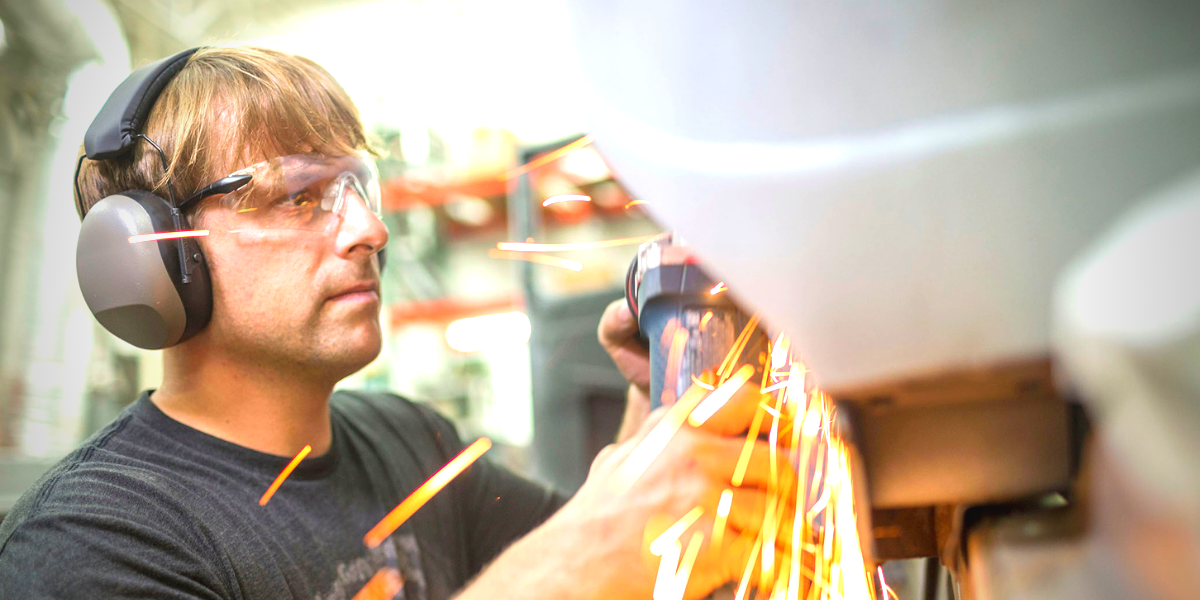
Occupational Hearing Loss and Choosing the Right Hearing Protection
According to the CDC, 22 million US workers are exposed to hazardous levels of noise each year; 24% of hearing difficulty can be attributed to occupational exposure. With statistics like that, it is easy to see why the hearing protection market continues to steadily grow. As options expand, it is important to choose the right hearing protection. To do that, one must consider the job environment and individual needs of workers.
How loud is too loud?
Hazardous noise is typically defined as long or repeated exposure to anything over 85 decibels (dB). In fact, when noise exposure is at or above 85 dB for 8 hours or more, OSHA requires companies to implement hearing conservation efforts to prevent hearing loss. 
What are the effects of hazardous noise exposure?
Simply put, too much exposure to loud noises can result in hearing loss. More technically speaking, overexposure kills the nerve endings in your inner ear. This can lead to permanent hearing loss that cannot be medically corrected. Less severely, it can result in a reduced ability to hear high-frequency sounds or understand speech which may require hearing aids.
How can occupational hearing loss be prevented?
The best way to prevent occupational hearing loss is for workers to wear proper hearing protection in loud environments. On job sites that are not consistently loud but may reach 85dB+ occasionally, companies should utilize a noise monitor to track exposure and follow OSHA protocol as needed. This is something we recommend as part of a workplace safety checklist.
What are different hearing protection options?
When it comes to choosing the right hearing protection, the two main options are earmuffs and earplugs. Both come in several types that offer different features that are beneficial to workers. Proper protection should be chosen based on needed features and protection levels.

Earmuff Hearing Protection
Earmuffs are available in both passive and electronic. Pyramex earmuffs have an NRR (noise reduction rating) of 19 to 26. Earmuffs offer padded ear cups for comfort and flexibility of fit. One benefit of earmuffs is that they are easy to spot and, therefore, confirm compliance. They also keep workers’ ears warm in the cooler months.
Pyramex passive earmuffs come in a variety of styles, from traditional to low profile cup designs to cap-mounted options. These muffs come in neutral colors like black and gray as well as hi-vis.
Electronic earmuffs have all the benefits of passive earmuffs with the added advantage of connection. Pyramex's line of electronic muffs suppresses the noise you don’t want to hear and lets in the sound you do. Users can connect via AUX or Bluetooth and use microphones to communicate with fellow workers depending on which model is chosen.

Earplug Hearing Protection
Earplugs have an increased NRR above that of ear muffs due to their close contact with the ear canal. Pyramex’s plugs have an NRR range of 22 to 34. Earplugs are easy for workers to carry on their person and come in both disposable and reusable versions.
Just because an earplug is disposable, doesn’t mean it has to be basic. While we offer a traditionally designed plug, we also offer single-use plugs with stems and cords for easy insertion and wear. Our disposable foam plugs come in two different shapes to better fit most ear sizes.
Our reusable earplugs are also offered with stems and cords. They come in an additional option of banded, which allows them to rest on the neck for quick access. These plugs come in two different shapes to fit user needs. Reusable earplugs can be cleaned with soap and water.
Another variety of Pyramex earplugs is metal detectable. These are often used in food processing and come in both disposable and reusable.

When to Wear Hearing Protection
While hearing protection is important to wear on the job site, noise exposure can also be an issue outside of the workplace. Proper protection should be worn in several environments off the clock.
One such example is at the gun range or in other tactical environments. One should also consider wearing hearing protection at outdoor sporting events such as NASCAR races, which can average around 100 dB and last several hours. In 1988, a football game between LSU and Auburn was so loud the roar of the crowd registered as an earthquake on the seismic scale.
Harmful noise levels can even be reached at home, especially around machinery such as power tools. Maintenance activities like mowing the lawn can also endanger hearing. If hearing protection is needed while working with electricity, opt for a dielectric option to prevent the flow of electrical currents.
What hearing protection is best for you?
The answer to that depends greatly on individual circumstances. When deciding on what hearing protection to purchase for yourself or your team, ask yourself the 10 questions below:
- How much protection (NRR) do you need?
- What task is being performed?
- Does hearing protection need to seal against dirt and debris?
- Will it be cold/call for warming accessories?
- Does hearing protection need to be reused?
- Do you need to easily or frequently communicate with team members?
- How frequently will hearing protection be removed?
- How dirty is the job?
- What protection is most comfortable for the user?
- Are you wearing it along with head protection, eyewear, or other PPE?
There is no “right answer” when it comes to choosing hearing protection. Many options can provide the wearer with the needed protection for any given job. Some, however, may be better suited for certain applications than others. Not sure what protection is best for you or your team? Let us help!




